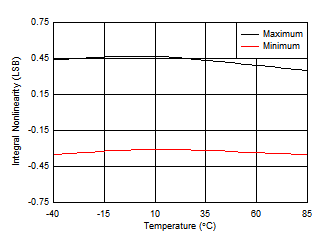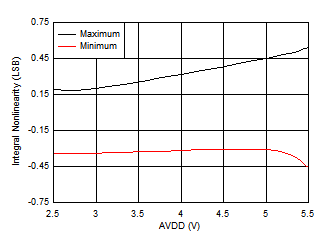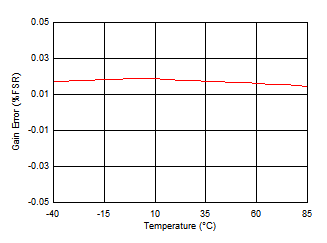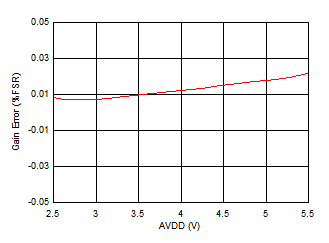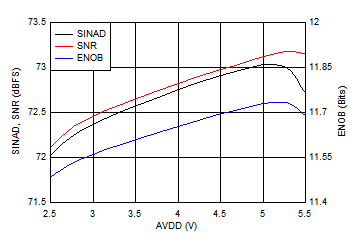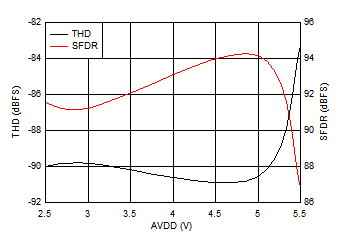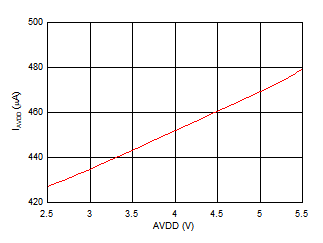SBAS980B June 2019 – June 2020 TLA2518
PRODUCTION DATA.
- 1 Features
- 2 Applications
- 3 Description
- 4 Revision History
- 5 Pin Configuration and Functions
- 6 Specifications
-
7 Detailed Description
- 7.1 Overview
- 7.2 Functional Block Diagram
- 7.3 Feature Description
- 7.4 Device Functional Modes
- 7.5
TLA2518 Registers
- 7.5.1 SYSTEM_STATUS Register (Address = 0x0) [reset = 0x81]
- 7.5.2 GENERAL_CFG Register (Address = 0x1) [reset = 0x0]
- 7.5.3 DATA_CFG Register (Address = 0x2) [reset = 0x0]
- 7.5.4 OSR_CFG Register (Address = 0x3) [reset = 0x0]
- 7.5.5 OPMODE_CFG Register (Address = 0x4) [reset = 0x0]
- 7.5.6 PIN_CFG Register (Address = 0x5) [reset = 0x0]
- 7.5.7 GPIO_CFG Register (Address = 0x7) [reset = 0x0]
- 7.5.8 GPO_DRIVE_CFG Register (Address = 0x9) [reset = 0x0]
- 7.5.9 GPO_VALUE Register (Address = 0xB) [reset = 0x0]
- 7.5.10 GPI_VALUE Register (Address = 0xD) [reset = 0x0]
- 7.5.11 SEQUENCE_CFG Register (Address = 0x10) [reset = 0x0]
- 7.5.12 CHANNEL_SEL Register (Address = 0x11) [reset = 0x0]
- 7.5.13 AUTO_SEQ_CH_SEL Register (Address = 0x12) [reset = 0x0]
- 8 Application and Implementation
- 9 Power Supply Recommendations
- 10Layout
- 11Device and Documentation Support
- 12Mechanical, Packaging, and Orderable Information
Package Options
Mechanical Data (Package|Pins)
- RTE|16
Thermal pad, mechanical data (Package|Pins)
- RTE|16
Orderable Information
6.8 Typical Characteristics
At TA = 25°C, AVDD = 5 V, DVDD = 1.8 V, and fSAMPLE = 1 MSPS (unless otherwise noted).
| Standard deviation = 0.49 LSB |
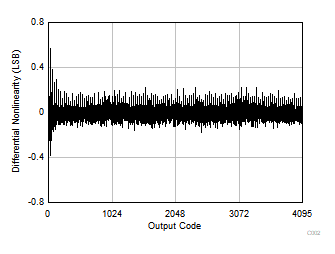
| Typical DNL = ±0.5 LSB |
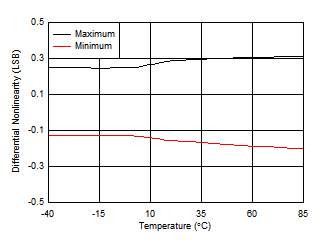
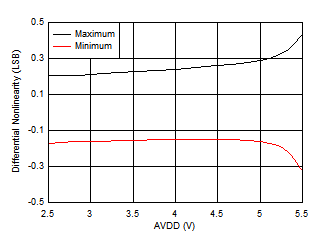
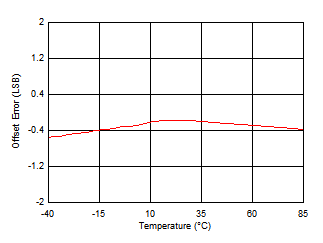
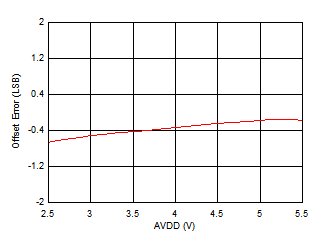
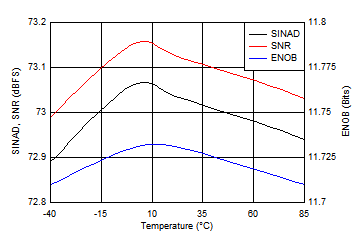
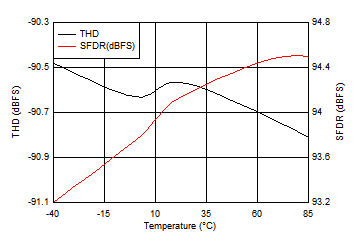
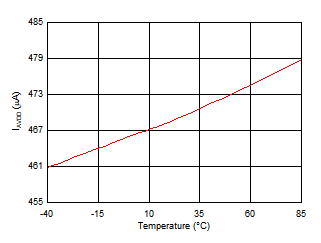
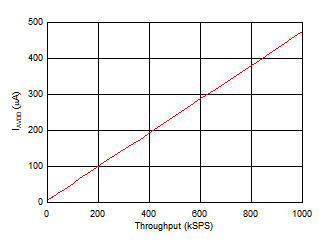
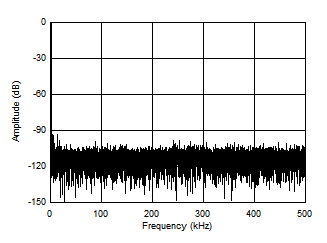
| fIN = 2 kHz, SNR = 73.2 dB, THD = –92.1 dB |
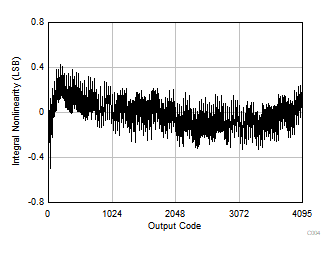
| Typical INL = ±0.5 LSB |
